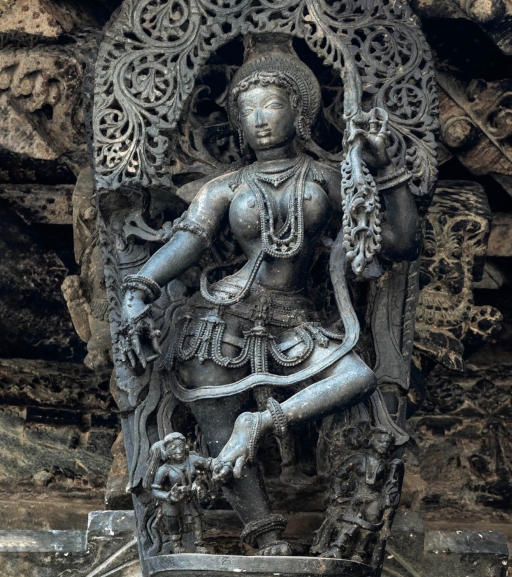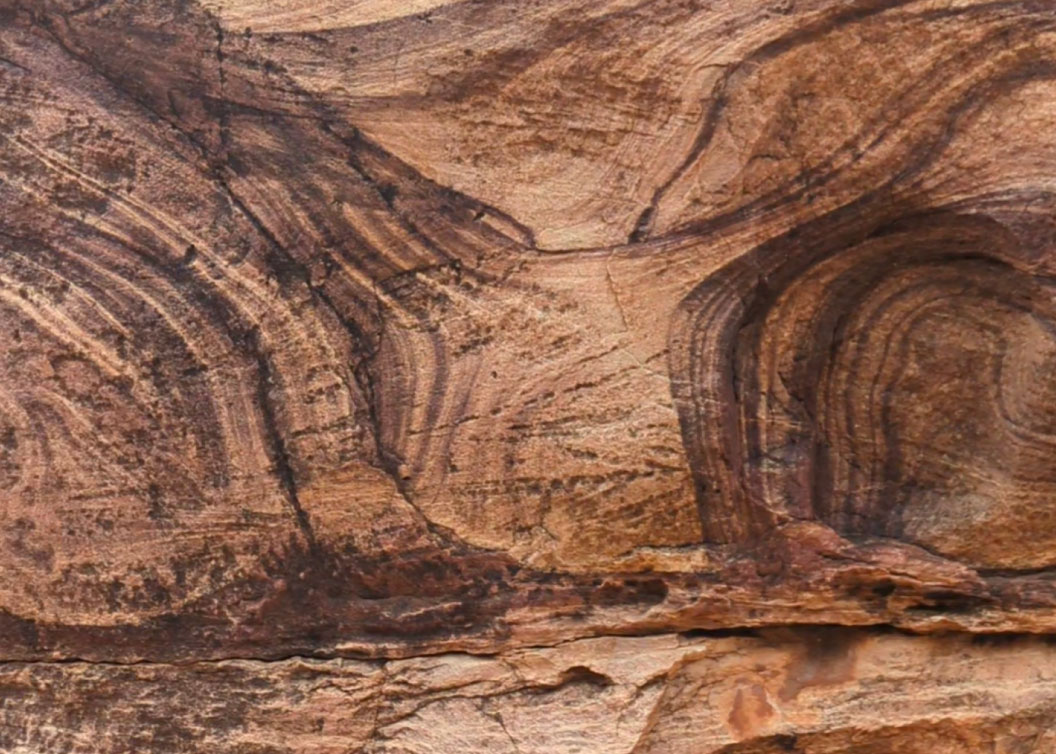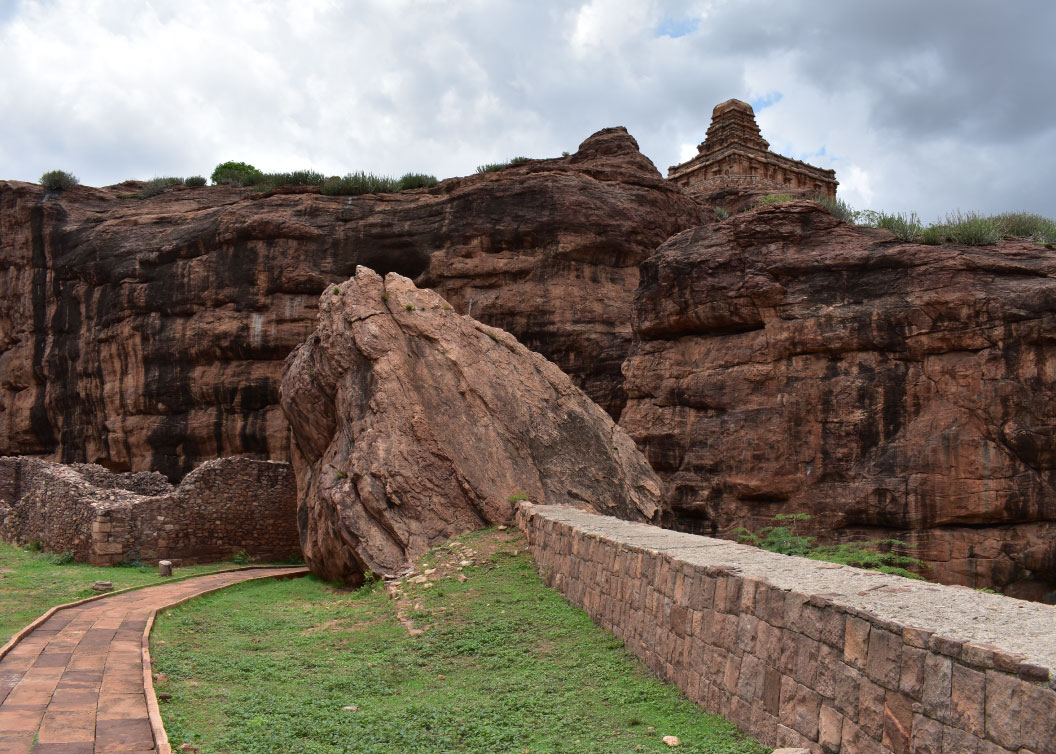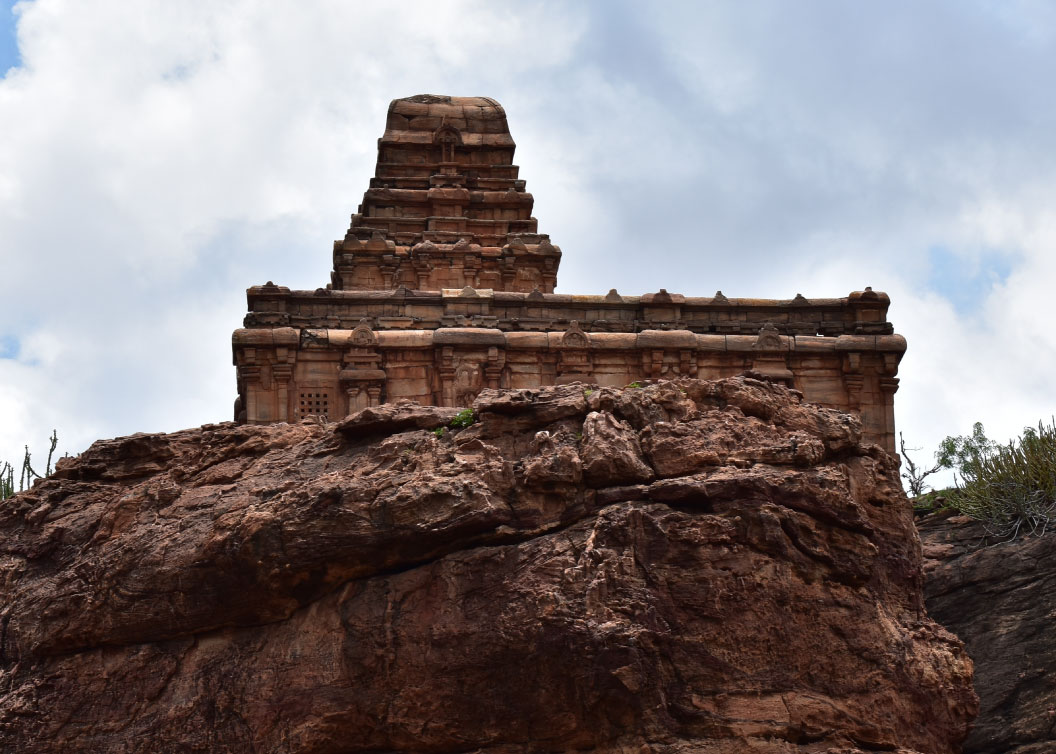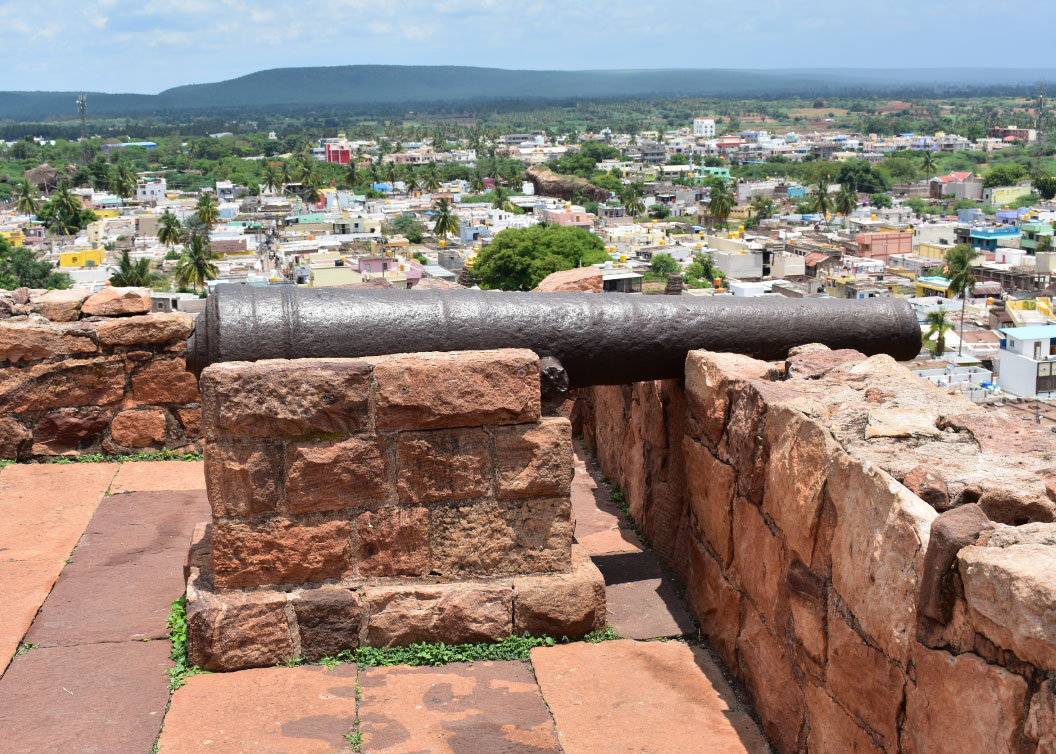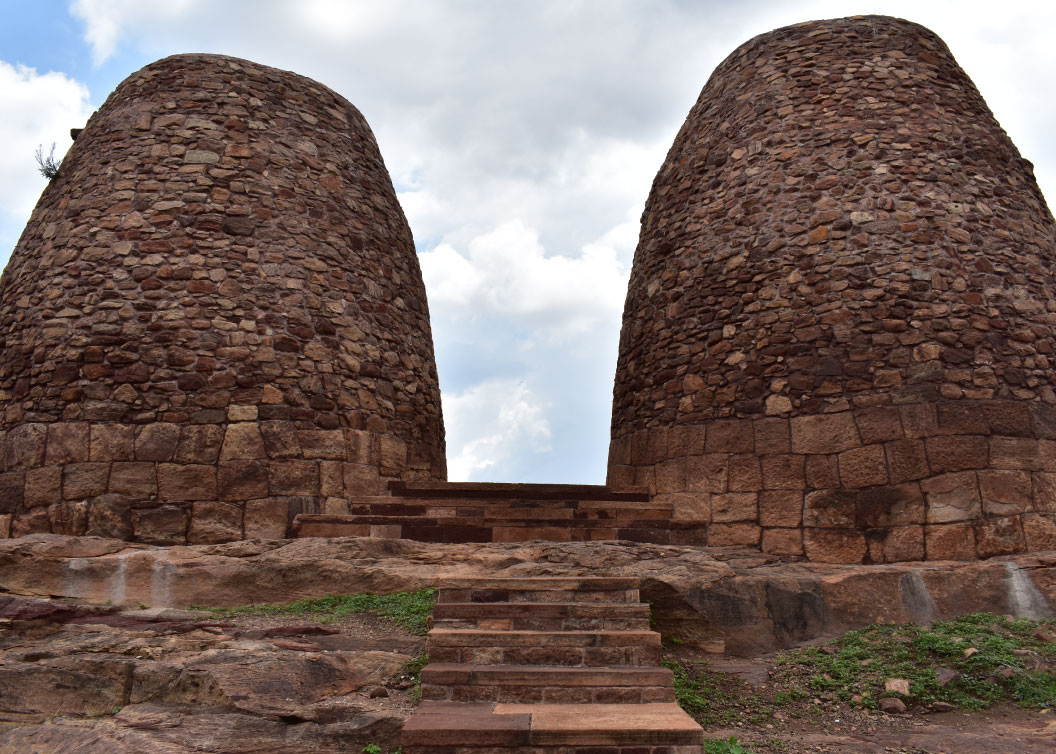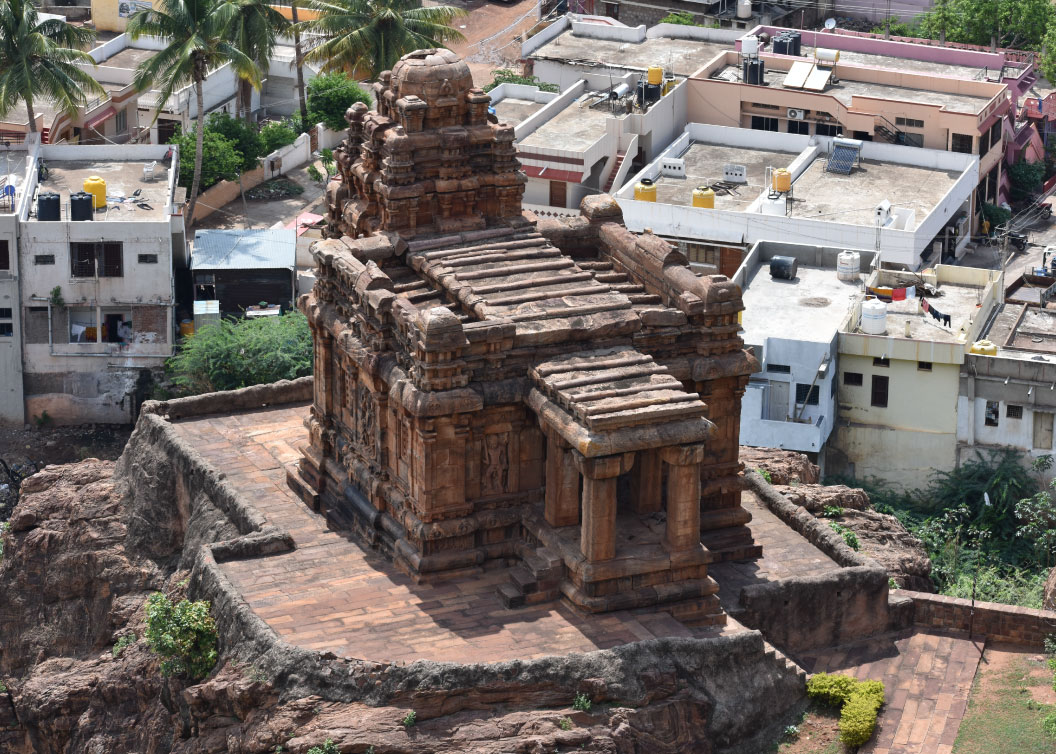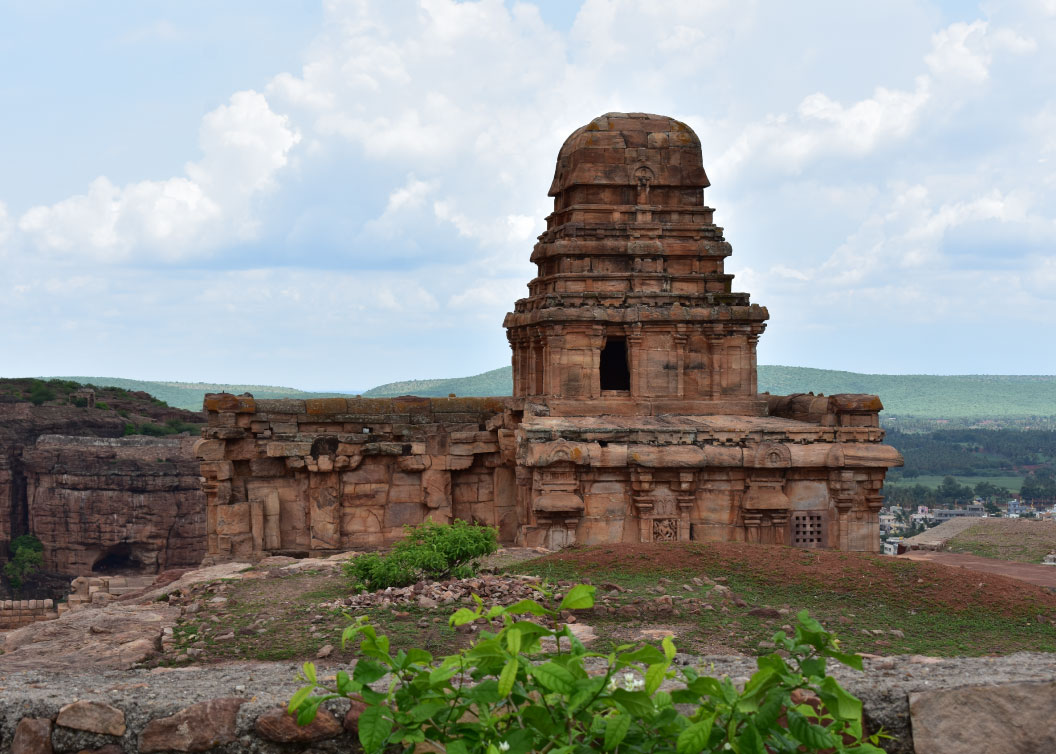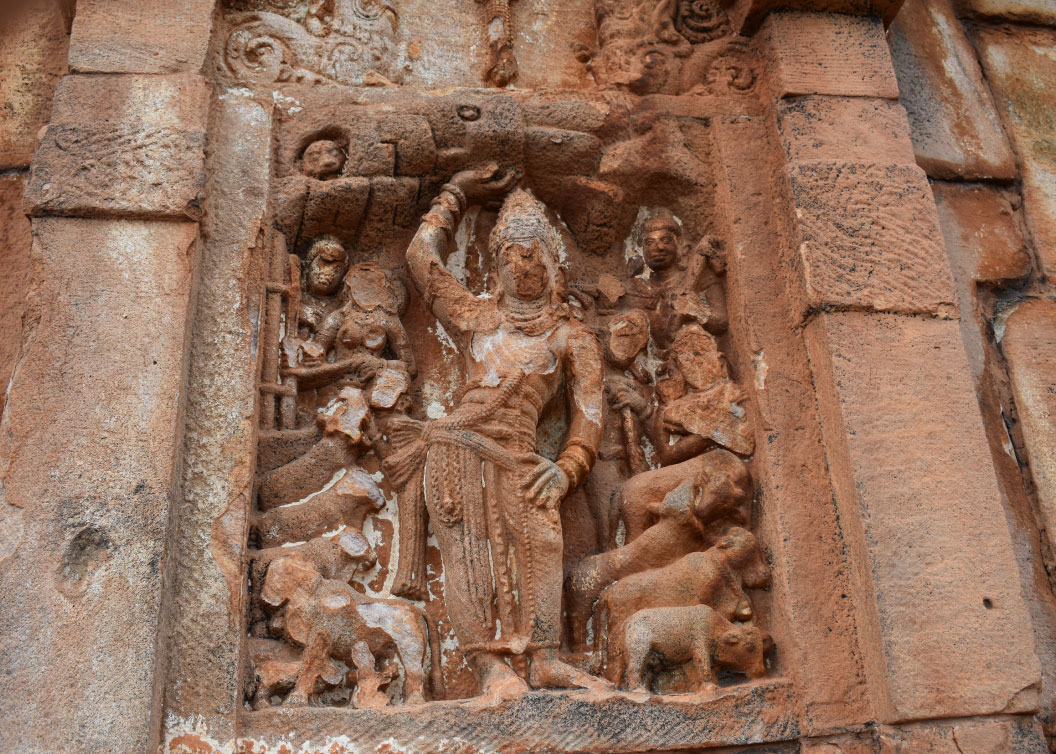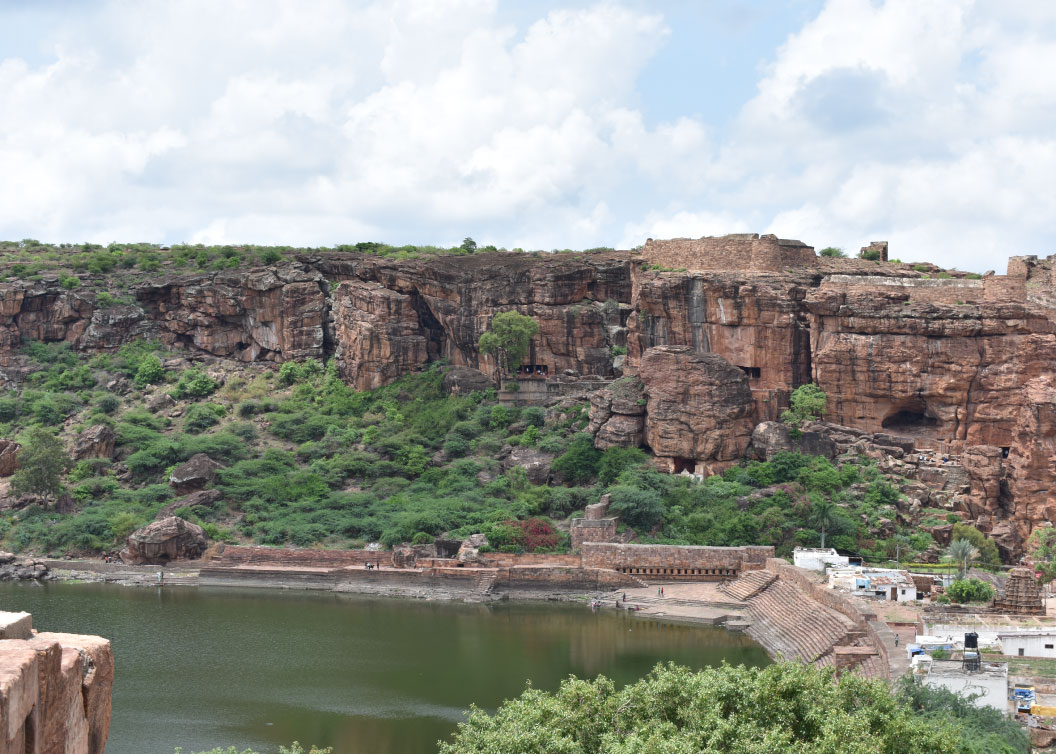Ascending the Northern Fort: A Deccan Landscape
John Weaver
As travellers make their way up the narrow ravine to reach the Northern fort, surrounded on all sides by towering escarpments and bluffs, the natural beauty of Badami makes itself known (Image 1). Despite the impressive range of styles, histories, and buildings, the stunning Deccan landscape offers a thread through which the many different monuments cohere into a sense of shared place. The cliff-faces showcase the implicit charm of the local stone, with reddish striations adorning the rock as if painted on with a brush (Image 2). Views from below the top reveal how the temples seamlessly blend into the environment like they were emerging from the hill itself (Images 3 & 4).
The built remains unveil yet another dimension to Badami’s layered history as forts, granaries, and lookouts offer a glimpse into the civil and military landscape (Images 5 and 6). From one such point, the full architectural splendor of the Malegitti Temple may be seen, with its imitation wood roofing and Dravida superstructure (Image 7).
At the very top stands the Upper Shivalaya temple, likely the earliest remaining structural mandiram built by the Early Chalukyas (Image 8). This structure wonderfully embodies the Deccan’s natural beauty in its reddish-brown stone and boasts refined carvings of legendary stories like Krishna lifting the Mountain Govardhan (Image 9). From here, one can find a view of Badami in all its magnificence (Image 10).

